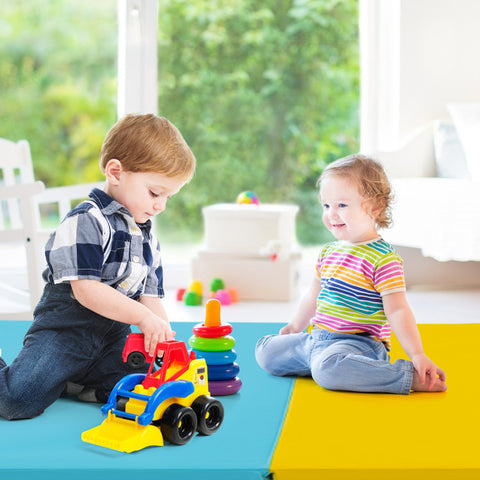News
How to Choose the Right Gymnastics Mat for Home Training
Home practice has become increasingly popular among gymnasts, cheerleaders, and fitness enthusiasts. Whether it’s for children learning cartwheels or athletes perfecting tumbling routines, a safe training environment is essential. At the heart of this setup is the gymnastics mat. Selecting the right mat for home use requires careful consideration of size, thickness, material, and intended purpose.
This article provides a professional, in-depth guide to choosing the perfect justice gymnastics mat for home training.
Why a Home Gymnastics Mat Matters
- Safety First: Prevents injuries from falls, slips, or improper landings.
- Confidence Building: Encourages athletes to try new moves in a secure environment.
- Skill Progression: Supports proper technique with the right cushioning.
- Versatile Training: Can be used for gymnastics, stretching, yoga, and other exercises.
- Convenience: Brings gym-level safety and performance into the home.
Key Considerations When Buying a Home Gymnastics Mat
1- Thickness
- Thin mats (1.5–2 inches): Best for beginners practicing rolls or balance activities.
- Medium mats (3–5 inches): Suitable for intermediate skills and light tumbling.
- Thick mats (8–12 inches): Ideal for advanced landings and aerial skills.
2- Size and Space
- Small spaces: Folding mats or compact panels.
- Larger rooms: Tumbling mats or interlocking systems.
- Outdoor training: Inflatable mats that can be stored after use.
3- Material Quality
- High-density foam: Provides firm support without sinking.
- Vinyl/PU leather covers: Durable, waterproof, and easy to clean.
- Non-slip base: Ensures the mat stays stable during training.
4- Portability and Storage
- Folding mats: Easy to carry and store.
- Air track mats: Lightweight and inflatable, suitable for multi-use spaces.
- Mats with handles: Convenient for quick transport.
5- Safety Features
- Reinforced stitching to prevent wear and tear.
- Non-toxic, skin-friendly materials for children.
- Velcro strips for connecting multiple mats safely.
Best Types of Mats for Home Training
Folding Mats
- Easy to store and carry.
- Suitable for kids, beginners, and multipurpose use.
Tumbling Mats
- Provide continuous training space.
- Good for cheerleading and intermediate gymnasts.
Air Track Mats
- Inflatable and portable.
- Provide bounce and cushioning similar to a spring floor.
Crash Mats
- Thicker design for advanced athletes.
- Excellent for practicing landings and high-impact moves.
Care and Maintenance Tips for Home Mats
- Wipe with mild soap and water after each session.
- Avoid placing mats in direct sunlight for long periods.
- Store folding mats flat or in a dry, cool place.
- For inflatable mats, deflate properly and store safely.
- Inspect regularly for damage or loose stitching.
Conclusion
Choosing the right gymnastics mat for home training is an investment in safety, performance, and confidence. By considering thickness, size, material, portability, and safety features, families and athletes can create a professional-quality training environment at home.
A well-selected mat not only protects against injuries but also encourages consistent practice, skill development, and long-term success in the sport.
Frequently Asked Questions (FAQs)
Q1: What’s the safest mat for children at home?
Folding mats or wedge mats are best for beginners as they are stable, cushioned, and easy to store.
Q2: Can air track mats be used indoors?
Yes, they are ideal for indoor spaces as long as the floor is clean and free of sharp objects.
Q3: How much space do I need for a tumbling mat?
At least 10–15 feet of open space is recommended for safe tumbling practice.
Q4: Are home gymnastics mats suitable for adults?
Yes, mats with proper thickness and firmness can support both children and adults.
Q5: How long does a gymnastics mat last?
With proper care, a quality mat can last 3–5 years or more, depending on frequency of use.


